NGIatlantic.eu fifth Open Call: applications and winning proposals!
NGIatlantic.eu is pleased to provide an overview of the successful projects funded under its Open Call 5. This was the last in the series of the H2020-funded open calls, to incentivise collaboration on NGI topics through the 2.8 MEuro earmarked to support the work of the EU components of teams of EU and US researchers that successfully applied to each call.
On the US side, thanks to sound commitment to the initiative and funding from the US National Science Foundation, from Open Call 3, US Partners of the successful teams could also apply to benefit from supplementary funding through an official Dear Colleague Letter Supplemental Fund support to existing grant holders within the NSF's Computer and Network Systems Core and Secure and Trustworthy Cyberspace programs.
The topics for Open Call 5 were selected on the basis of priorities set by its Expert Advisory Group and Experiment Monitoring Team, in close consultation with the NSF. Open Call focused 5 on two main topic categories. The first, stream a) aimed to provide support for the interconnection of EU – US Experimental Platforms, inviting established designers and facility providers of experimental infrastructures, testbeds, and platforms that could be used for NGI experiments on both sides of the Atlantic to join forces and offer their facilities to the community of experimenters and developers in other NGI topics. The second, stream b), was aimed at taking results from topics already in a mature state in the related priority topics of the NGI initiative to the next stage of experimentation on EU – US experimental platforms and these included i) Strengthening trustworthiness and resilience of internet; ii) Open Internet architecture renovation; iii) Greening the Internet: a Sustainable and Climate-friendly NGI; iv) Internet data sharing and interoperable services and v) Blockchain and Distributed Ledger Technologies for NGI. As for the previous open calls, applications that combined elements of both streams were also welcomed.
OC #5 PRIORITY TOPIC COVERAGE BY APPLICATION
As can be seen below, the 24 eligible proposals submitted to Open Call 5 provided both a good mix and scope in terms of priority topics addressed. Six of the experiments proposed encompassed elements of both streams, as encouraged by the call, or multiple elements of topics under stream b).
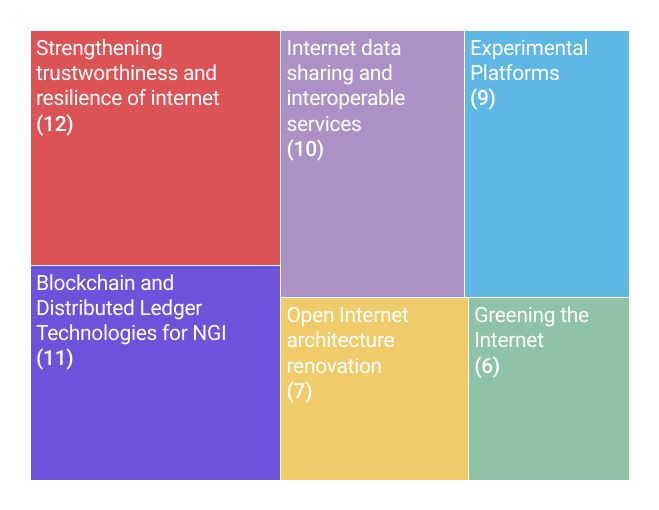
OC #5 GEOGRAPHIC COVERAGE
The proposals also provided good geographical coverage, not only in term of the EU countries represented (17) but also the range of US states (23). An overview of the geographical origin of the 8 funded proposals is provided below
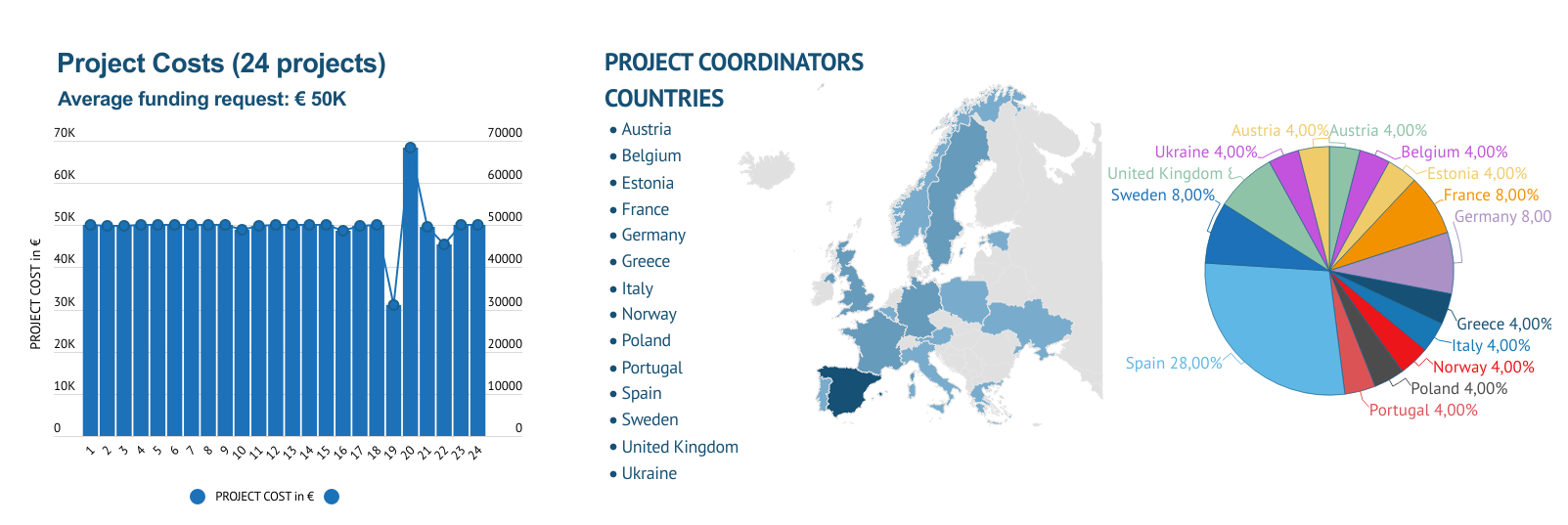
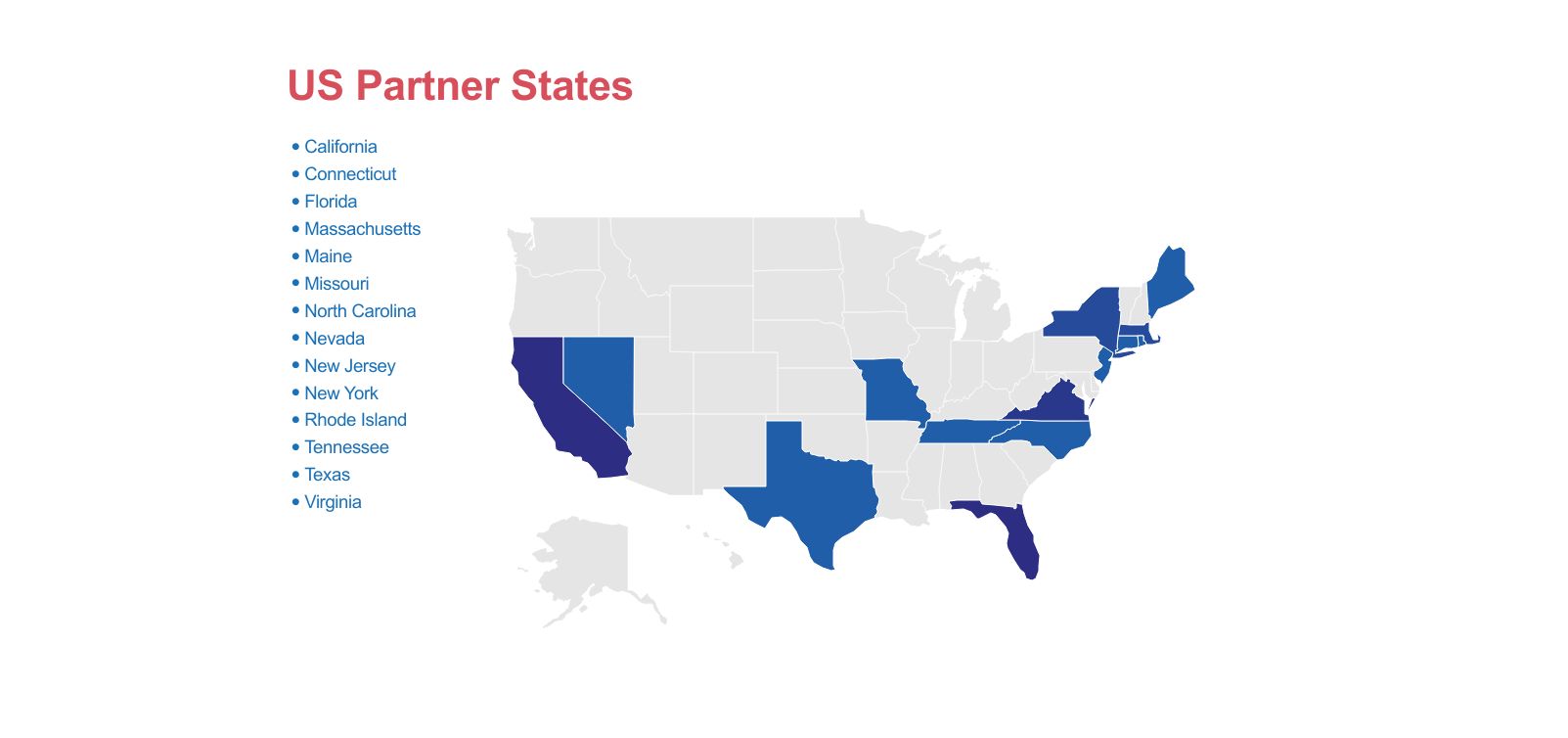
OC #5 APPLICANT ORGANISATION TYPE
The majority of coordinating partners on the EU side were from Research and Academia, followed by SMEs. This was the same on the US side, where the majority of partners were from also from universities. However, 2 of the funded experiments featured EU SMEs coupled with US Partner Universities. A full overview of both the EU and US organisation types are shown below:
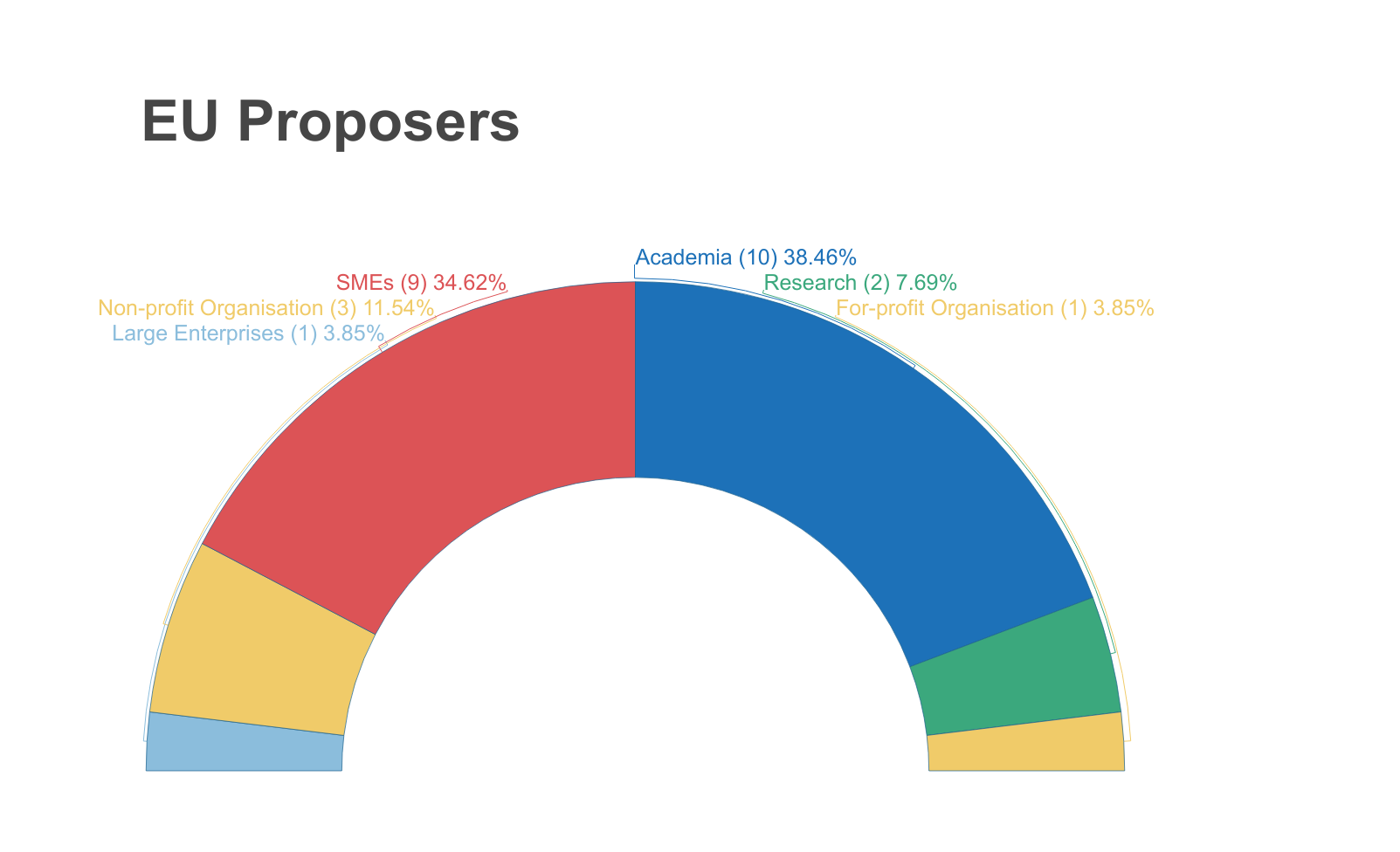
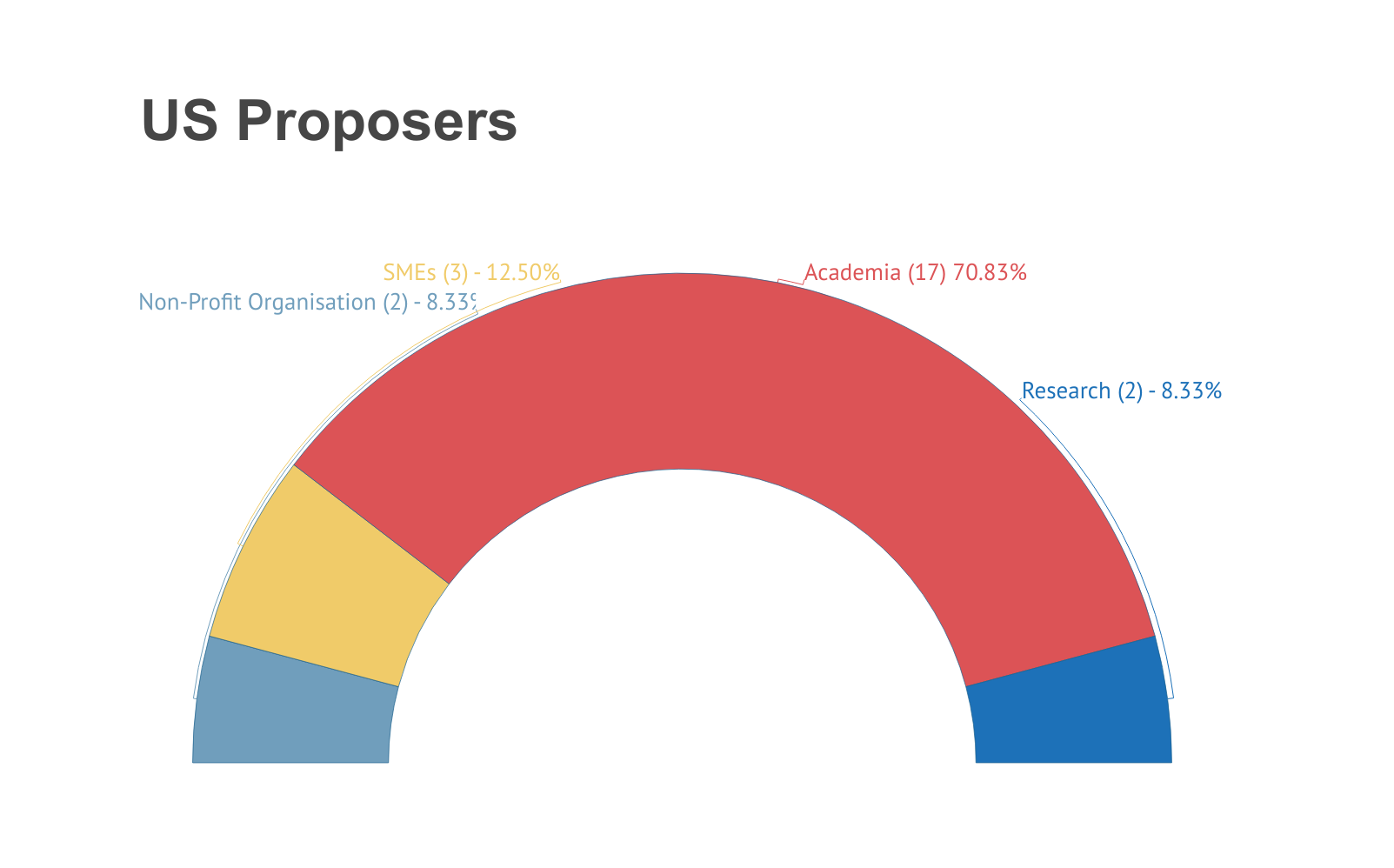
OC #5 WINNING PROJECTS
Of the 1.37M euro in funding requested, NGIatlantic.eu was able to fund the eight highest ranking projects submitted to Open Call for a total of 559,249 euro.
And without further ado here are our 8 winning projects:
1. HYPER 5G: Hyper Performance Network Digital Twin for Holistic Management of 5G IoT Edge Network
Tallinn University of Technology (EE) with Vanderbilt University (TN)
The Hyper-5G research project aims at experimenting with a network digital twin (DT), which can process data gathered from remote distributed EU-US IoT infrastructures and provide closed-loop control to build a common, powerful, federated learning model that embeds edge intelligence and twins with an end-to-end (e2e) view of the network.
Tallinn University of Technology, the EU partner, is involved in the configuration and deployment of DT services across the GRID5000 and Fit IoT-Lab, and assess Vanderbilt University, the US partner, in the interconnection of the Chameleon platforms. Vanderbilt University is experimenting with network interconnection, resource configuration, and evaluation of hierarchical federated learning experiments in Chameleon Cloud. | Topic: Experimental Platform Interconnection | See Experiment
2. Leveraging Path Diversity to Enhance Resilience, Scalability and Energy-Efficiency with SCION
Otto von Guericke-University (DE) with George Mason University (VA)
SCION is a novel NGI architecture which has reached a level of maturity, making it ready for large-scale deployment. Thus, the objective of this project is to deploy SCION over the NSF BRIDGES infrastructure over two very high-speed transatlantic links. Our project will demonstrate the SCION benefits through experiments carried out between the US and Europe over the SCIONLab testbed to demonstrate the privacy-enhancement (e.g., by splitting traffic over multiple paths) and improved reliability (e.g. with multi-path and seamless path failover) over SCION, as well as the scalability of our SCION-based, path-discovery mechanisms which help to effectively reduce the network’s power consumption and incentivize ISPs and transit providers to shift towards greener electricity | Topic: Experimental Platform Interconnection | See Experiment
3. Next Generation SSI Standards
Crossword Cybersecurity (UK) and Fraunhofer IAO (DE) with Spruce Systems, Inc. (NY)
Today identity theft is rife. The 5 month long Next Generation SSI Standards project will help to strengthen the trustworthiness of the Internet by issuing people with standardisedcryptographically verifiable credentials that allow relying parties to strongly identify them. Verifiable credentials remove the need for usernames and passwords, thereby significantly reducing the possibility of identity theft. Interworking tests will be carried out between Europe (Crossword Cybersecurity and Fraunhofer) and the USA (Spruce Inc.). All partners are enhancing their existing products to meet the new standards, Crossword is building the test infrastructures, whilst Crossword and Spruce are testing their new prototypes against the test infrastructures and both are contributing to the standards development. The experiment will use existing infrastructures wherever possible, as well as the OIDC4VCs enhancements to the widely deployed OpenID Connect protocol suite, thereby increasing the likelihood of wide-scale adoption of SSI. | Topic: Strengthening trustworthiness and resilience of internet | See Experiment
4. Experimental validation of 5G Open RAN architecture evolution based on OpenAirInterface
ALLBESMART LDA (PT) with Virginia Polytechnic Institute and State University (VA)
The main goal of this experiment is to integrate the Open RAN interfaces implemented by Allbesmart (EU) with the RAN Intelligent Controller (RIC) applications developed by VT (US) and validate its performance on top of the Commonwealth Cyber Initiative xG Testbed (US). The Virginia Tech team (VT) will work on an end- to- end 5G O- RAN reference implementation based on OpenAirInterface to promote innovation, especially on the near real- time RIC algorithms such as multi- user scheduling and resource allocation. The outcome of this experiment will contribute to the publicly available open-source OpenAirInterface software library with new O-RAN features towards an open and renovated 5G architecture. | Topic: Open Internet architecture renovation. | See Experiment
5. The TikTok Observatory: Interconnecting Junkipedia and Tracking Exposed's monitoring infrastructures
Tracking Exposed (FR) and Algorithmic Transparency Institute at the National Conference on Citizenship (WA)
This project aims to integrate the monitoring infrastructure developed by Tracking Exposed and Junkipedia to monitor the Tiktok recommendation algorithm. This new combined experimental pipeline will be used to establish if the recommender system differs across mobile and web applications.
When analysing social media platforms, their proprietary recommendation solutions are considered to be “black boxes”. The complexity and opacity of those algorithms requires to make an empirical comparison between the suggested contents on the Tiktok Web interface and its Mobile application, in order to answer our main research question. | Topic: Experimental Platform Interconnection. | See Experiment
6. Open and Resilient Radio Access Network for Next Generation Wireless Backhauls
University of Ca’ Foscari Venice (IT) with Northeastern University, MO
This project aims at merging the data-based network design carried on by the University of Ca’ Foscari Venice (IT) with the advanced experimental facilities by Northeastern University (MA) to study the backhaul network of 5G and beyond, which will radically change compared to previous generations of mobile networks. We will produce scientific results, open source code, and open data that will contribute to shape this research field in the years to come. | Topic: Open Internet architecture renovations. | See Experiment
7. SecureUAV: Energy-efficient malware detection in Unmanned Aerial Vehicles via advanced AI models
Kristiania Univerity College (NO) with Embry Riddle Aeronautical University (FL)
The project aims at building an experimentation framework to test smart intersection applications on top of a federated testbed composed of Smart Santander city scale testbed and Columbia University’s COSMOS testbed in Manhattan, NYC. The testbed captures data from cameras at intersections, process them to identify vehicles and pedestrians and perform predictive analysis for traffic flow and detect dangerous situations. The information will be made available to application developers via common APIs and data models. | Topic: Internet data sharing and interoperable services. | See Experiment
8. Transatlantic testbed for LEO Satellite mega-constellations
University of Surrey (UK) and Virginia Polytechnic Institute and State University (VA)
This experiment aims to: (1) Interconnect the SpaceNet Testbed and its mirror at Virginia Tech to examine ways in which inter-constellation connectivity can be achieved. This direct connectivity will allow us to explore future scenarios of how different mega-constellation might interconnect (e.g., OneWeb with Starlink or Telesat with Kuiper), without revealing proprietary information of each constellation, creating the equivalent of Interdomain Routing (like the Border Gateway Protocol or BGP) for space networks. (2) We will explore how mega-constellations behave in the face of failures or disruptions such as jamming and satellite takedowns. The US partner will work on the “Resilience to disruption and failures” experiment design and implementation and will highlight the importance of the constellation design/topology to build a resilient network. | Topic: Experimental Platform Interconnection. | See Experiment









